Anaheim Peppers: All About The Long Green Chiles
1
Published Apr 23, 2024
This post may contain affiliate links. Please read our disclosure policy.
Anaheim Peppers are one of my favorite Mexican chiles. For those of you who are unfamiliar with their sweet, earthy charms, you’re in luck. Today we’re doing a deep dive, covering what they are, what they taste like, and how to store them. I’ve also assembled a roundup of my favorite recipes for Anaheim chili peppers so you can put them to good use!
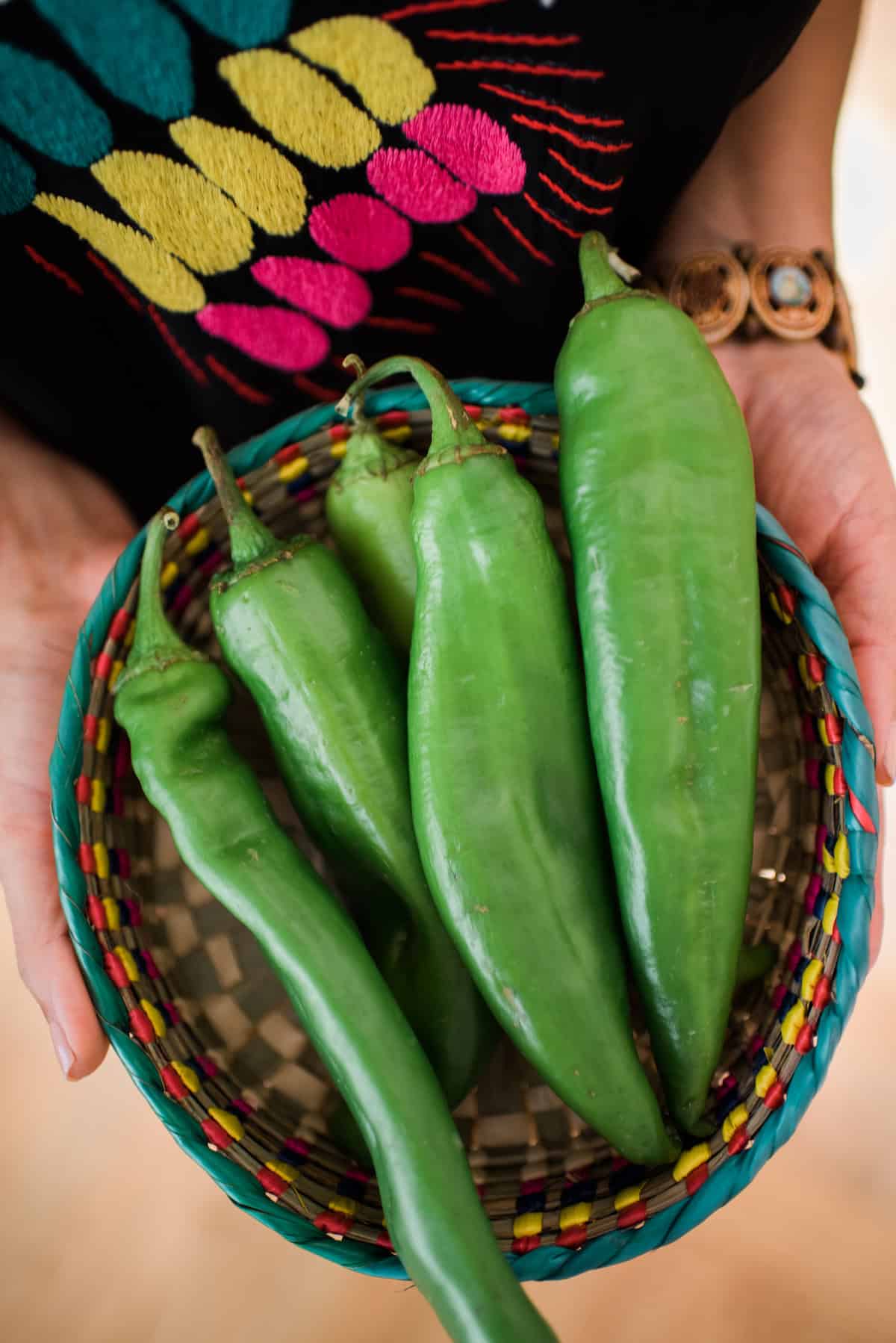
What are Anaheim peppers?
Originating from the sunny southwestern state of New Mexico, these beauties made a name for themselves in Anaheim, California. As such, Anaheim chile peppers are also known as “California chiles” or “New Mexico chiles” depending on where you’re from.
Whatever you call them, these chiles strike the perfect balance between heat and sweet, making them deliciously versatile. They’re equally yummy in your breakfast scrambles or for jazzing up your enchiladas.
Anaheim peppers typically grow to about 6 to 10 inches in length, boasting a sleek and elongated shape that tapers to a point at the end. Their large size makes them great candidates for stuffing, which is why I often use them in my chiles rellenos.
What do they taste like?
I’m often asked, “Are Anaheim peppers hot or sweet?” In my opinion, they are certainly not “sweet”. They are perfect for those who enjoy a mild kick. They’re very flavorful and milder than jalapeños but have just enough heat to add zesty interest to any plate they touch. If you’ve got little ones in the house (or just don’t love spicy foods), Anaheims have a mild to medium heat. Read more about their scoville scale on this blog post: An Introduction to Mexican Chiles.
Are they healthy?
First, let me say I’m not a nutritionist. If you’re wondering whether Anaheim chile peppers fit into your diet, especially if you have specific health goals or dietary needs, it’s best to consult with a professional to make sure these chiles are a good match for you. All that said, they’re a welcome addition to my familia’s plate. Here’s why:
Despite their mildly spicy reputation, Anaheim peppers are actually fruits. Crazy, right? So, if you’re looking for a zesty way to sneak more fruit into your diet, these chile peppers are perfect.
These peppers are packed with vitamins C and A, which are great for your immune system and vision. Plus, they’re rich in fiber, and, like most produce, they’re low in calories.
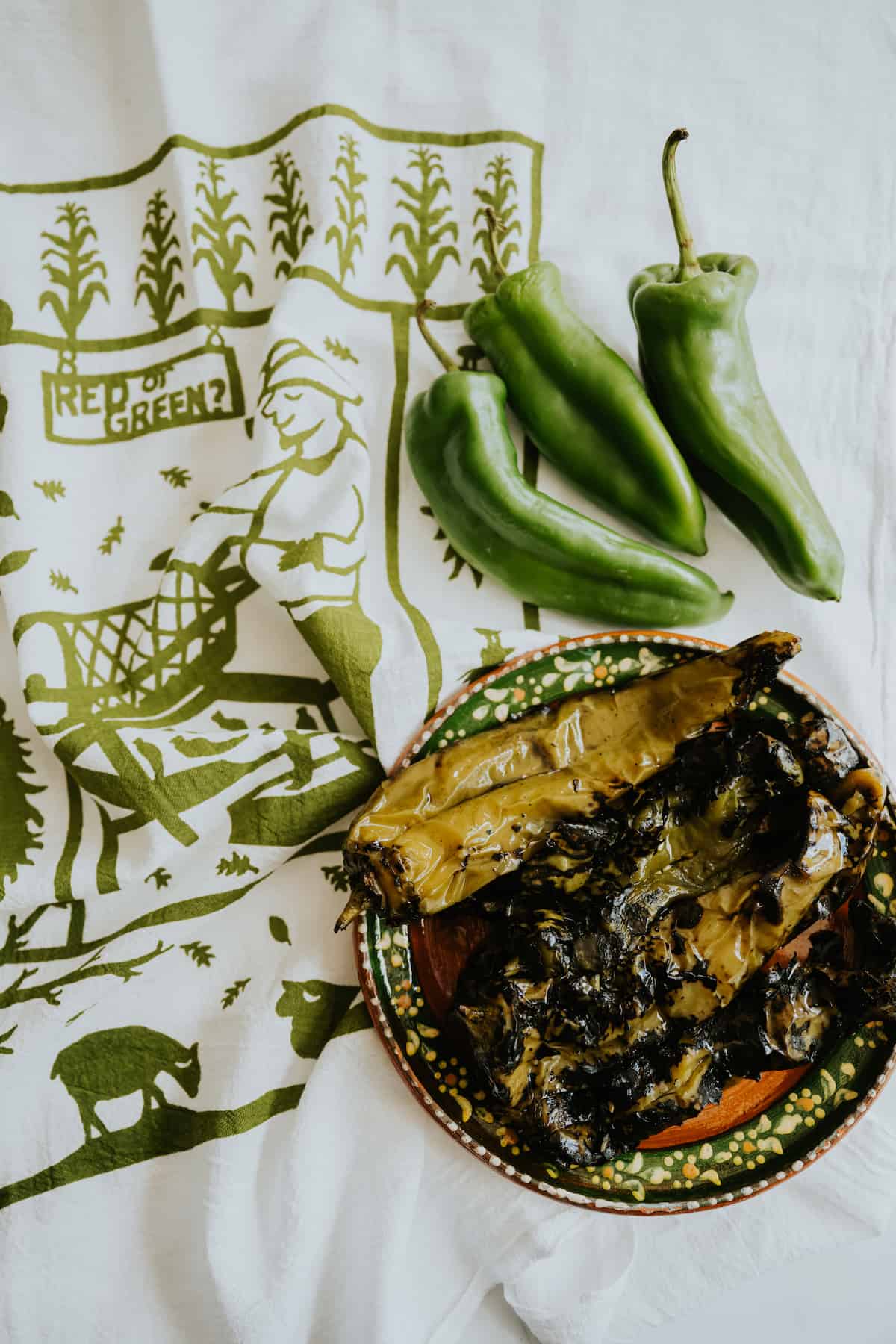
Are they easy to grow?
I love growing Anaheim peppers in my salsa garden!
- Zones: Anaheim pepperss flourish in USDA zones 4-12, making them a great fit for a wide range of climates.
- When are they in season? They thrive in warm weather, making their season typically from late summer through early fall. That said, they can be found in grocery stores year round.
- When should I plant them? The best time to plant Anaheim peppers is after the last frost, when the soil has warmed up. In Colorado, that’s usually in May, after Mother’s Day is my rule.
- When are they ready to pick? They’re usually ready to harvest about 75-90 days after planting. You’ll know they’re ready when they reach their full size and the skin is smooth and firm.
- Companion Planting: Generally speaking, most pepper plants tend to do well next to tomatoes — perfect for a little salsa garden! They also play well with herbs, root veggies (e.g. onions and carrots), spinach, legumes, and marigolds.
- Plant Maintenance: I like to think of all the plants in my garden as my little amigos. Anaheims need regular check-ins, a bit of nurturing, and the right environment to thrive. Ensure they’re planted in well-drained soil and get plenty of sunlight. Water them enough to keep the soil moist but not waterlogged. Adding mulch can help retain soil moisture and control weeds. As they grow, you might want to support them with stakes or cages, especially if you’re expecting a bountiful harvest.
- Pro Gardening Tip: Rotate your crops! If you planted tomatoes or potatoes in a spot last year, plant your Anaheims there this year. It helps prevent soil-borne diseases and keeps your garden healthy and happy.
How should I store them?
When it comes to storing your bounty, you have lots of options for preserving Anaheim peppers:
- Countertop: If you’re a fruit bowl kind of person, these shiny beauties are a perfect addition if you keep them whole. They’ll last for about a week at room temp — just remember to keep them away from ethylene-producing fruits like apples and bananas.
- Refrigerator: You can also store whole Anaheims in a loose-fitting plastic bag in the crisper drawer, where they should last about 1-2 weeks. If you have sliced, chopped, or roasted them first, put them in an airtight container and use within the week.
- Freezer: I usually prefer to roast them first, and then freeze. Roasted Anaheims can be kept in an airtight container in the fridge for up to a week, or frozen for a year.
- Roasting: If you’re wondering how to roast Anaheim peppers, my post will walk you through every step.
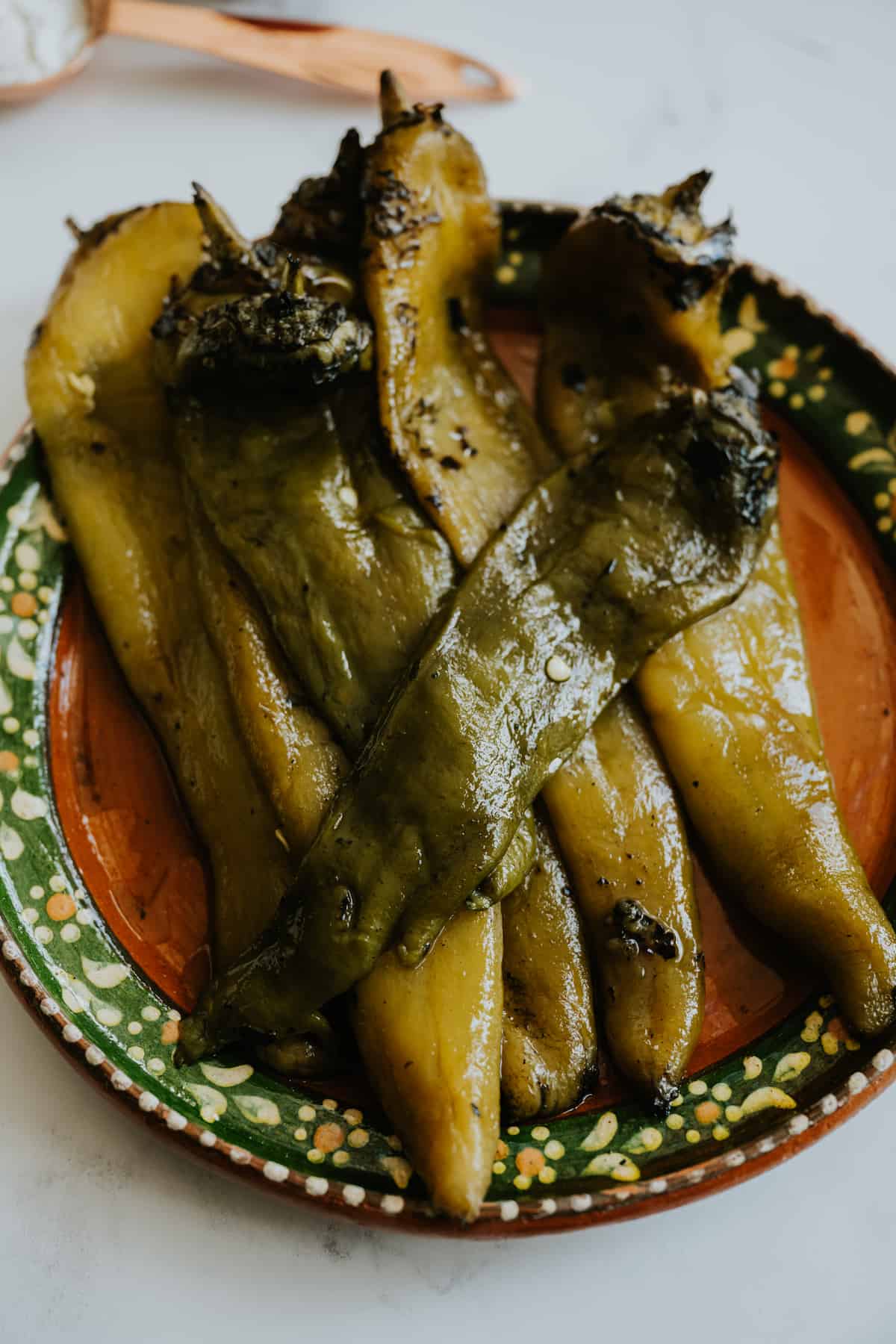
What To Make With Anaheim Chili Peppers
Now that you’ve got your hands on some, are you wondering what to do with Anaheim peppers? Here are some delicious options:
- Instant Pot Pork Tamales with Pork & Roasted Green Chiles
- Enchiladas Verdes
- Salsa Borracha
- Green Chile Bacon Mac & Cheese
- Carne a la Tampiqueña
- Crispy Chicken Tacos w/ Shredded Mexican Chicken
- Mexican Eggs Benedict
- Homemade Beef Taquitos
- Espagueti Verde
- Migas Breakfast Tacos
- Tex Mex Chile con Queso
- Chiles Rellenos
Frequently Asked Questions
Anaheim peppers are incredibly versatile and shine in a variety of dishes. Whether you’re looking to add a mild spice to your dish without overwhelming it or seeking a pepper that’s as good served fresh as it is cooked, they’re a great choice.
I personally think they’re best used for stuffing, thanks to their size and mild heat. Their mild flavor also makes them great for adding a subtle kick to salsas, sauces, and soups. For more inspiration, jump back up to the previous section — I have lots of recipe ideas for you!
These mildly spicy peppers are delicious raw, though roasting them does bring out more of their sweetness. They don’t need to be peeled if you’re serving them raw, but if you roast them first it’s recommended that you do.
Heck yeah! They’re one of my favorites for this classic Mexican dish. Try them in my Chiles Rellenos (Chiles Rellenos Capeados), Chiles Rellenos de Camarones y Queso (Cheese and Shrimp Stuffed Poblanos), Chicken Stuffed Hatch Chiles, or Pimientos Rellenos con Picadillo de Carne Deshebrada.
I think poblano peppers and Hatch chiles are the closest swaps — they both have a similar sweet heat and are great for stuffing.
They sure can. When they’re young, Anaheim’s wear a bright, verdant green coat that deepens in hue as they mature. Given time and the right conditions, they can take on a beautiful red or sometimes even a rich, deep burgundy hue, signaling they’ve reached their full ripeness and sweetness.
The term can vary depending on the region, but I’ve heard them called “chiles Anaheim,” “chiles verdes,” or “chiles California.” That said, you won’t often find Anaheim peppers in Mexico, but the chilaca chile pepper is a great substitute.
When we speak of how spicy a particular chile is, the most common measurement tool is called the Scoville scale. Heat is thus measured in what are known as Scoville heat units (SHUs). The Scoville scale ranges from 0 SHU (e.g. bell peppers) to over 2 million SHUs (e.g. Carolina Reapers).
Anaheim peppers are considered mildly hot with a range of 500-2500 SHUs. For comparison, poblanos range from 1000-1500 SHUs and jalapeños range from 2500-8000 SHUs.
More Common Mexican Ingredient Deep Dives
- What is Masa Harina?
- Queso Fresco: All About Mexico’s Favorite Fresh Cheese
- Oaxaca Cheese: All About Queso Oaxaca (a.k.a. Quesillo)
- Cotija Cheese: All About Queso Cotija
- The Inside Scoop on Pepitas — What They Are & How They’re Used
- What Is Piloncillo? All About Mexican Brown Sugar
So, what are you going to make with Anaheim Peppers now that you know the skinny? Let me know in the comments below or tag me on the socials so I can cheer you on!
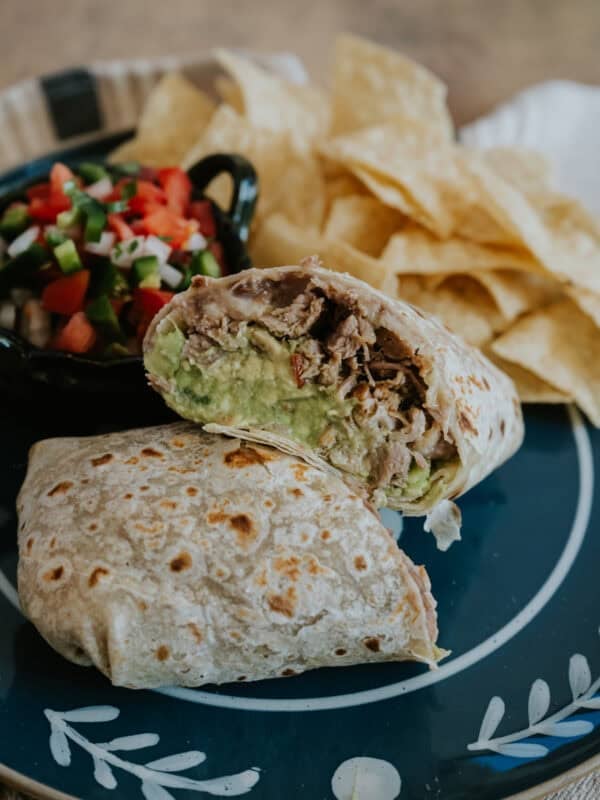
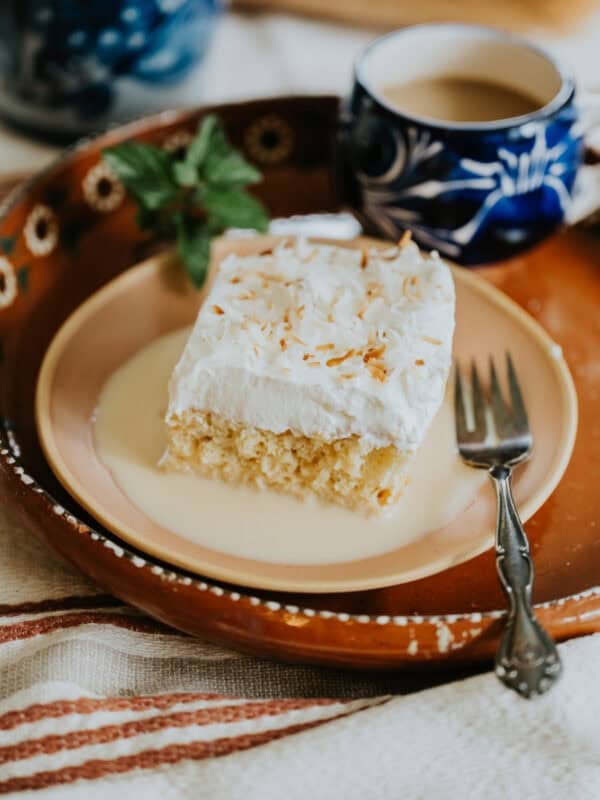
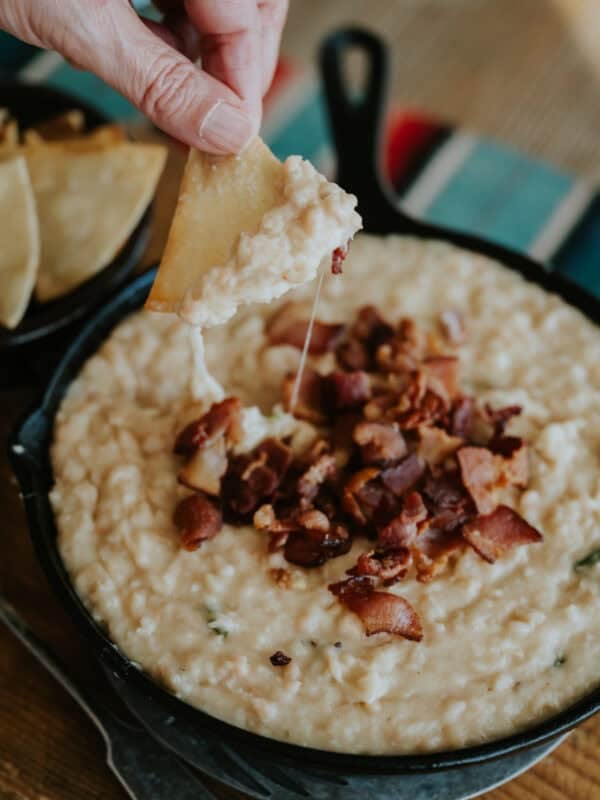










Long greens come in mild to spicy hot. We use the mild ones at our restaurant for Chile rellenos. I also use them in other dishes.